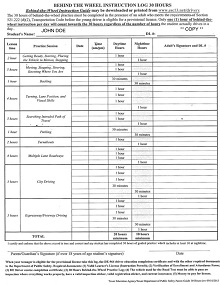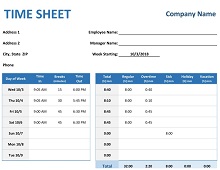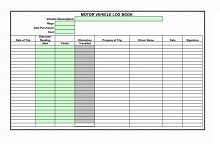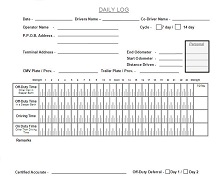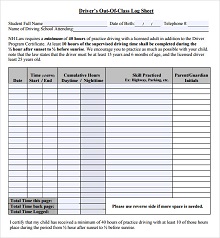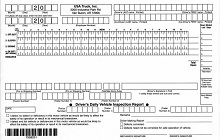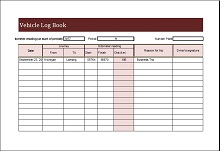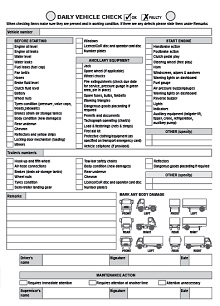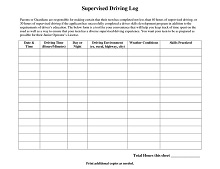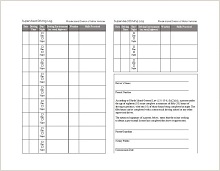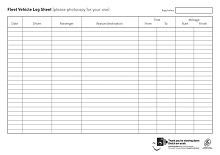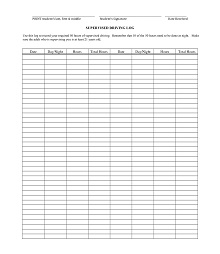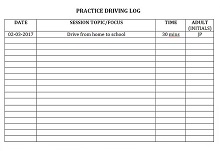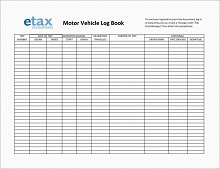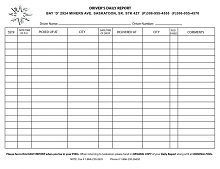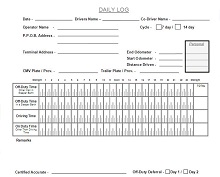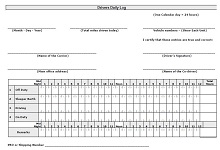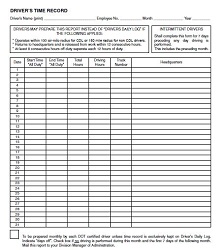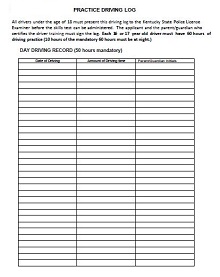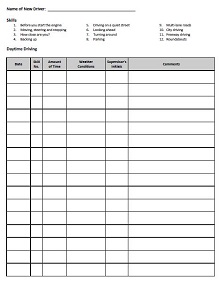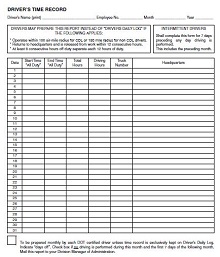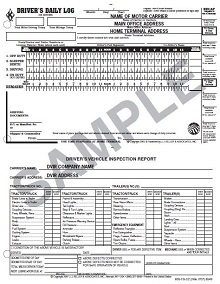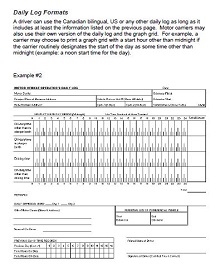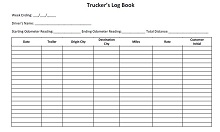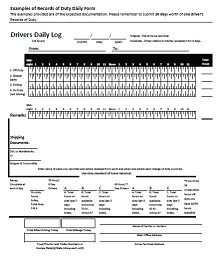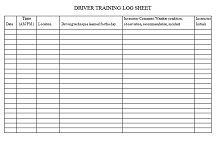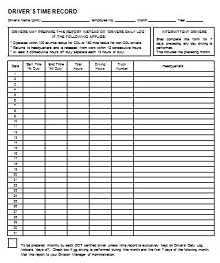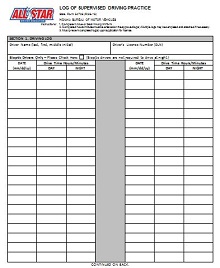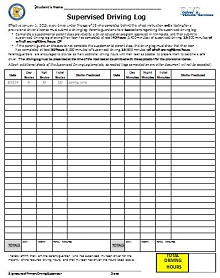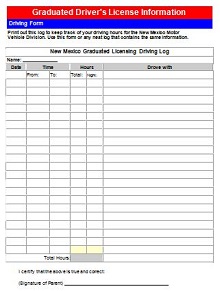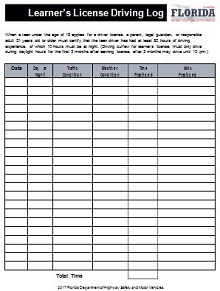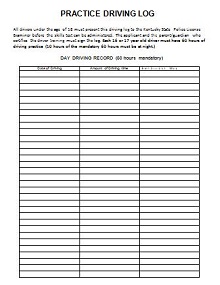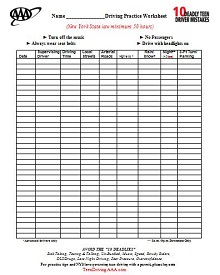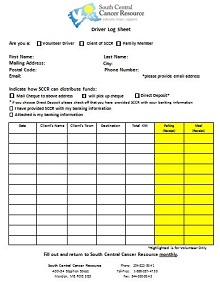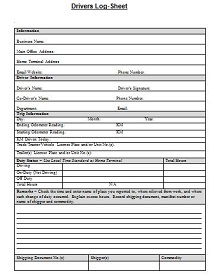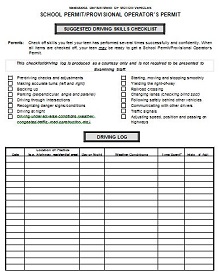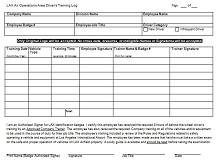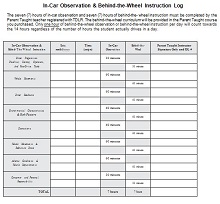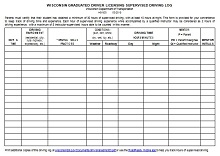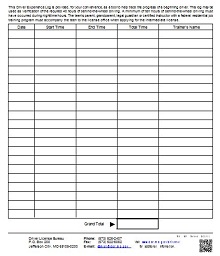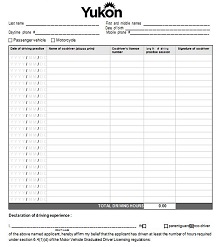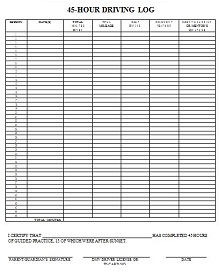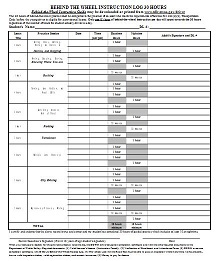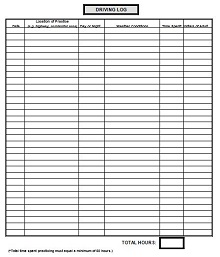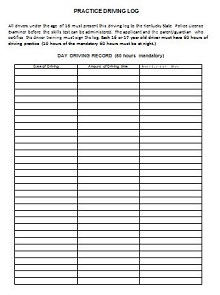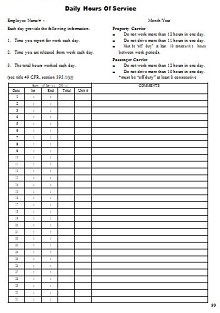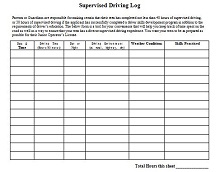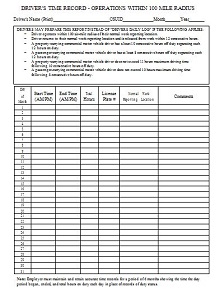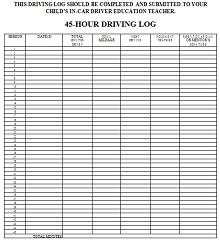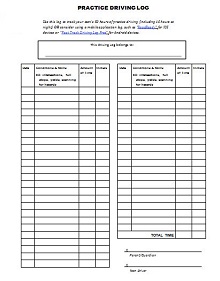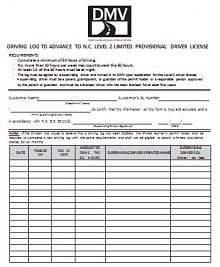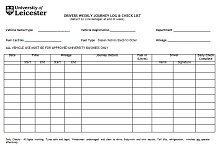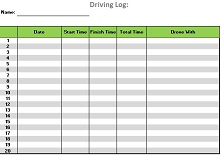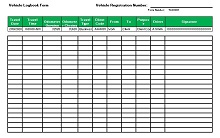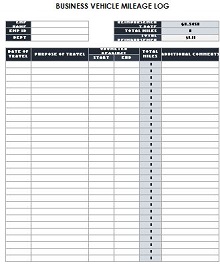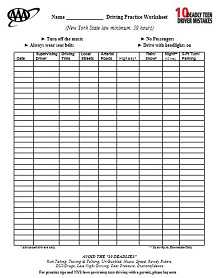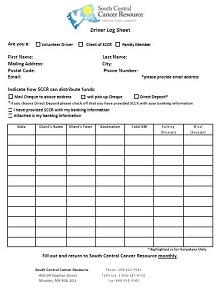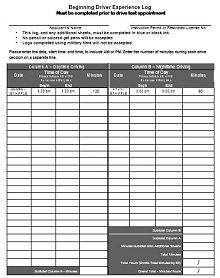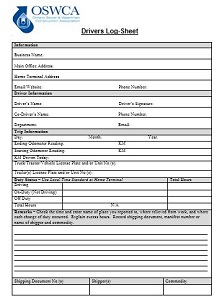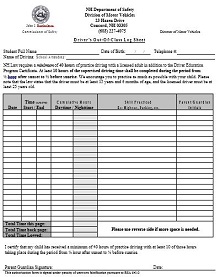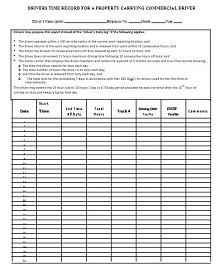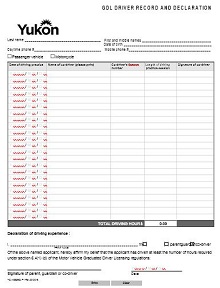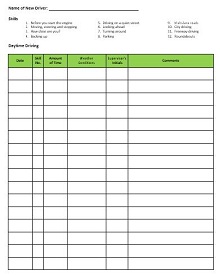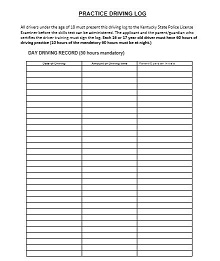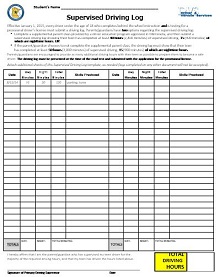70+ Driver Log Book Excel Templates (Printable PDF, Excel)
Drivers need to keep track of their time behind the wheel, and a driver’s daily log book does just that. Essential for long-distance drivers, it is a record of hours driven, rest periods taken, and other important information necessary for filing reports to various governing agencies.
While not required for everyday people (who travel back and forth to work), having your own log book can be beneficial if there is any dispute about when you arrived at particular locations or if a violation occurred during your travels. Keeping such records can serve as invaluable evidence in case matters become clouded or unclear.
- Accounting Templates
- Art & Media
- Budget Templates
- Business Templates
- Calendar Templates
- Certificates
- Charts
- Education Templates
- Inventory Templates
- Invoice Templates
- Letter Templates
- Medical Templates
- Personal Templates
- Project Plan Templates
- Timesheet Templates
Download Free Driver Log Book Templates
What is a driver’s daily logbook?
A Driver’s Daily Log Book helps truck drivers track and log their service hours as required by law. It is a detailed record of the driver’s work activities over a designated time period, which includes rest breaks, drive times, sleeper berth times, and off-duty periods. Drivers can use the Log Book to document their locations, distances traveled, and pick-up and delivery times to demonstrate compliance with federal safety regulations.
Maintaining a Driver’s Daily Log Book prevents fatigue-related collisions caused by long hours behind the wheel. Keeping a detailed record of driving times also reduces the risk of fines for violating worktime restrictions under the Hours of Service Regulations. Employers can ensure their drivers stay safe on the road by creating a Driver’s Daily Log Book and tracking driving patterns daily.
Why Keep a Log Book?
There are two main reasons why it’s important for truck drivers to keep an accurate and up-to-date log book. First, it helps ensure that drivers are complying with FMCSA hours-of-service regulations.
These regulations govern the maximum hours a driver can be on duty and the minimum time they must spend off duty. Second, a log book can be used as a valuable record in the event of an accident or other incident.
How to Keep a Log Book
Here are some tips on how to keep an accurate and up-to-date driver daily log book:
- Use a paper or electronic logbook: Many trucking companies now require their drivers to use electronic logbooks, which are still allowed. If you’re using a paper logbook, be sure to fill it out in ink so that it can’t be altered later.
- Record all required information: Drivers must record their name, date, total hours on duty, total miles driven, and time spent on breaks.
- Make entries at the end of each day: Be sure to make all entries at the end of each day, rather than trying to remember what happened earlier in the week. This will help ensure accuracy.
- Keep your logbook up-to-date: It’s important to stay current, so be sure to update your logbook every day.
- Know the regulations: Familiarize yourself with the FMCSA hours-of-service regulations to stay compliant.
Benefits of Using a Driver Daily Log Book
A driver’s daily log book, also called a DOT log book, is an essential tool for any commercial driver. This simple notebook can help you stay compliant with DOT hours of service regulations, track your mileage, and even plan your routes. Keep reading to learn more about the benefits of using a driver’s daily log book.
Compliance with DOT Hours of Service Regulations
One of the biggest benefits of using a driver’s daily log book is that it helps you stay compliant with DOT hours of service regulations. These regulations govern how many hours a driver can be on duty in a day and a week and how many hours must be spent off duty between shifts. Drivers who don’t comply with these regulations can face serious penalties, including fines and suspension of their commercial driver’s license (CDL).
A driver’s daily log book makes it easy to track your hours so that you can ensure you’re always in compliance. All you have to do is record when you start and end each shift and any breaks you take during the day. At the end of the week, total up the numbers and you’ll know exactly how many hours you’ve worked.
Tracking Mileage
Another benefit of using a driver’s daily log book is that it can help you track your mileage. This is important for a few different reasons. First, tracking your mileage can help you plan your routes more efficiently. Knowing how many miles you drive each week, you can map out routes that minimize unnecessary driving and save time and money.
In addition, tracking your mileage can help you monitor your vehicle’s condition. By recording the date and the odometer reading each time you fill up your tank, you can more easily spot trends in your vehicle’s fuel efficiency. This information can be invaluable when it comes time for preventative maintenance or unexpected repairs.
Finally, tracking your mileage can also help you maximize deductions come tax time. If you’re self-employed or own a trucking company, you can deduct a portion of your vehicle expenses come tax time. But to do so, you’ll need to have detailed records of your mileage something that’s easy to do with a driver’s daily log book.
Truck drivers’ logbook templates record the activities when they travel from one place to another. It is the best way to record the distance they covered at a specific time because most get paid according to their driving hours. The logbook template allows you to put details about the truck, driving, hours of service, and essentials about the journey. For that purpose, you should utilize our free truck driver log book Excel template to record all the activities and events of the trucker.
These templates are printable and allow the user to make any changes. The Federal Motor Carrier Safety Administration limits that a driver can’t drive for more than 14 consecutive hours of driving; they use the logbook to monitor the driver’s service hours. See below to learn everything about the truck driver’s logbook.
What is a Truck Driver Log Book?
A logbook is an official document used to record the activities of the trucker. The supervisor uses this logbook to get the trucker’s journey events and the authorities to check whether the trucker follows the rules. For a trucker, it isn’t easy to manually write all the details about the journey. The ready-made template makes your work easier; see our collection and download the template you want for your trucker. Authorities need an up-to-date log book to see whether the driver’s activities follow the set rules.
They restrict driving hours because drivers get tired from driving consecutive hours. It is best to put tired drivers off the roads because driving with a tired body and mind may cause road accidents. You can avoid heavy fines by documenting your activities in the logbook. The logbook should contain the truck details, driver name with contact details, details about the journey, and other essential details. The driver should include the details in their logbook if any accident or breakdown occurs. You can see the driver log sheet example to complete the driver’s daily logbook.
What Should Appear in Driver Log Book
The drivers’ salary depends on the service hours they offer to meet the supervisor’s deadline. For that purpose, it is necessary to document how many hours drivers drive when they ship from one place to another. The logbook is a valuable document for the driver to get paid and for authority to prove they don’t violate the rules. The driver log book is helpful if it contains all the essential elements. The things that should be included in every driver logbook are as follows:
- The driver’s details include name, address, phone number, and mailing address.
- The name, address, and phone number of the co-driver.
- It should contain the vehicle number, model, and color.
- The information about the business, address of head office, phone number and other contact details.
- Description of the trip
- Starting odometer reading and ending odometer reading
- It must contain the total mileage
- A liter of fuel was spent on this trip with the price the driver paid for it.
- Kilometer has driven in a day with hours
- Details about the driver’s status
- Address from where the journey starts with the address of the destination
- It should include the details about the breakdown and accident if it occurs.
Guidelines to Use Driver Log Book Template
The driver logbook is an official document that must be updated regularly. The FMCSA checked it and expected an up-to-date logbook; otherwise, drivers would pay a heavy fine. Some drivers don’t know how to fill it out, which may cause logbook violation penalties and create misunderstandings with the supervisor. Download the free driver log sheet and see the below-mentioned guidelines below to use it effectively.
- Download the template from our collection.
- Enter your name, address, phone number, and mailing address.
- Enter your co-driver’s details.
- Write the address where you start your journey and the address of the destination.
- Check your odometer and enter the numeric value displayed on it. When you reach your destination, enter the odometer reading in the specified field on the logbook.
- Put details about the vehicle you drive in your logbook.
- Write about the reason for making this trip.
- Enter the value of the total mileage.
- Enter the value you paid for fuel and the number of liters whenever you fill up your tank.
- Enter how many hours you drive with sleeping hours. Also, include the status of your duty. On the driver log book, there are four sections to represent the driver’s status:
- On duty (Not driving)
- Off duty
- Driving
- Sleeping
- Put the number of hours that you spend in each section.
- If you are done with any accident or break, write the place where it occurred, details of the damage, and expenses.
Why We Need Driver Log Book
Keeping a driver log book has many benefits when you are on the road with your vehicle. Check out our collection of printable log book templates, which are free of cost and available in the formats you prefer. To explore the importance of logbooks, we share some points that help you understand them easily.
- Ensure the following rules: The driver’s driving hours information ensures that the driver follows all the rules set by authorities. Authorities are not allowed to drive more than 14 hours consecutively. The duty shift information placed by the driver ensures that the driver follows the rest of the rules defined by the stat.
- Avoid heavy fines: You can pay many fines if the logbook is outdated. A well-designed log template allows you to put your duty shift details to avoid any fines. Never put false entries in your log book; it is a critical violation that may result in a penalty and put you out of service.
- Record of driver’s activity: The driver’s logbook records everything that happens when the driver moves from one place to another. It contains information before starting the drive, at the end of the drive, while driving, when drivers stop and rest, and all other incidents during traveling.
- Helpful to meet the deadline: It is the best way to promptly track and complete the supervisor’s deadline. Sometimes, the truckers’ supervisor gives a deadline to reach their destination in a specified time; this document is helpful to complete.
How to Create the Driver Log Book Template
When you are on the road with a vehicle, whether a bus, van, car, or truck, you need a logbook to record everything about this journey; you need to put some effort into making it from scratch. It is easy to work with well-designed templates available on our site. These templates are available in Excel, PDF, and Word format. If you want to add something more or create it from scratch, follow the steps below.
Step 1: Open Microsoft Excel. Go to the “File” tab, click “New,” then select “Blank Document” to open a new document.
Step 2: Go to the “Insert” tab from the menu and click the “header and footer” option to add to your document. Make a header by entering your desired field in it.
Step 3: Enter the column header like driver name, address, phone number, vehicle number, driven hours, duty status, and other essentials that you want to enter in your document.
Step 4: Click on the “File” tab and select the “Save as” option to save your document. Put the name of your document and click ok to save it in your desired location.
Log Book Rules for Drivers
The DOT and FMCSA set some rules regarding the driving of truck drivers on the road. Understanding the violation is essential for truckers. They should know how many hours they can drive daily, weekly, and monthly. Some rule violations may put the trucker out of service, which means they are no longer allowed to drive. For that purpose, truckers need to know about these rules and regulations. See below to know all about these rules.
- According to the rules set by authorities, a trucker is allowed to drive only 11 hours of duty. You may be fined heavily if you violate the rules and make false entries in your logbook.
- Drivers must rest for 10 hours from duty and are not allowed for any work activity if they want to be on duty for 14 consecutive hours.
- The trucker’s logbook must be up-to-date to avoid penalties. The state also expects an up-to-date logbook to determine whether drivers follow the rules.
- Truckers can drive 60/70 hours in 7 or 8 days of work.
- The 30-minute break rule of FMCSA and DOT states that drivers must take a 30-consecutive-minute break after 8 hours of driving.
If you want to stay on the road, follow the above rules to avoid penalties. Most accidents occur due to the absence of the trucker’s mind and the consecutive hours of driving without any rest. Make sure to put your entries in the logbook daily. Download a ready-made daily log book template for drivers to put data about Hours of service. These hours of service rules help you to avoid any accidents.

